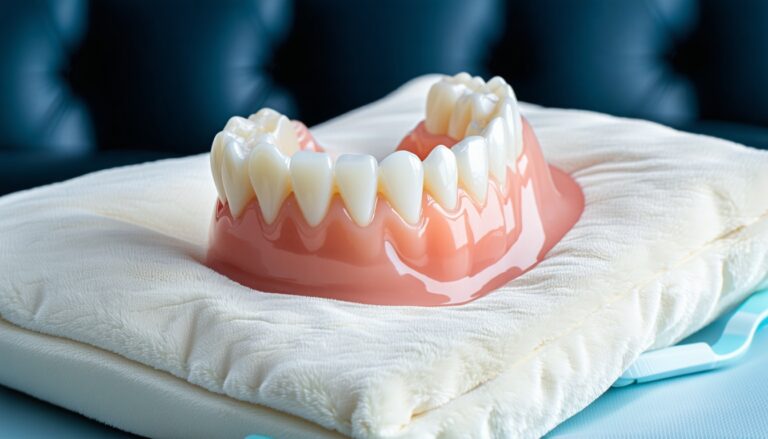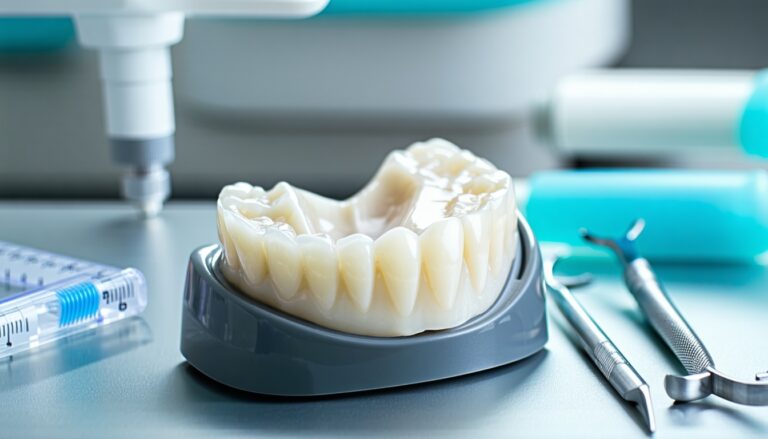Understanding TMJ Disorders
TMJ vs. Dental Insurance
For those managing TMJ disorders, understanding the differences between TMJ and dental insurance is crucial. TMJ, or Temporomandibular Joint Disorder, typically falls under health insurance rather than dental insurance. This is because TMJ is a disorder of the jaw bone/joint and facial muscles.
Health insurance providers usually cover TMJ treatments as they view it as a medical condition. However, dental insurance plans might only cover limited aspects. It is important to check with your insurance provider about does insurance cover TMJ therapy and the specific terms and limitations. Coverage can vary based on the state and the classification of the treatment.
Non-Drug Therapies for TMJ Disorders
Managing TMJ disorders effectively can often be achieved through non-drug therapies. These treatments are aimed at reducing pain, improving jaw functionality, and easing muscle tension.
- Physical Therapy: Techniques like jaw stretches, strength-building exercises, and posture training can alleviate TMJ discomfort.
- Orthotic Devices: Orthotic devices for TMJ with insurance coverage can help stabilize the jaw and prevent teeth grinding or clenching.
- Behavioral Therapies: Cognitive-behavioral therapy (CBT) can address habits like teeth grinding by teaching stress management techniques.
- Lifestyle Changes: Avoiding hard or chewy foods, practicing relaxation techniques, and maintaining good posture can significantly mitigate TMJ symptoms.
It’s important to consult with a specialized in-network TMJ dentist for jaw pain to determine the best non-drug therapy for your condition. For insurance-related concerns, providers like MetLife insurance TMJ specialist and BCBS dentist for TMJ treatment can offer comprehensive care under your plan.
Explore more effective TMJ treatment strategies by visiting related articles on our site.
Surgical Options for TMJ Treatment
When non-invasive treatments fail to alleviate the discomfort caused by TMJ disorders, surgical interventions may be necessary. Two primary surgical options include the Arthrocentesis procedure and other considerations for surgical approaches.
Arthrocentesis Procedure
Arthrocentesis is often recommended when less invasive methods have not provided significant relief. This procedure involves the insertion of small needles into the jaw joint to wash out the joint, removing inflammatory byproducts and alleviating pain.
Benefits of Arthrocentesis:
- Minimally invasive
- Short recovery time
- Can be performed on an outpatient basis
Risks of Arthrocentesis:
- Infection at the injection site
- Temporary jaw discomfort
- Limited effectiveness for severe TMJ disorders
| Step | Action |
|---|---|
| 1 | Local anesthesia is applied to the jaw area. |
| 2 | Small needles are inserted into the jaw joint. |
| 3 | The joint is irrigated with a sterile solution. |
| 4 | Medication may be injected to reduce inflammation. |
Discuss with your healthcare provider to determine if Arthrocentesis is suitable for your condition. For more insights, visit our page on tmd therapy with blue cross blue shield insurance.
Considerations for Surgical Procedures
When contemplating surgical options for TMJ, it is crucial to discuss the potential benefits and risks with your healthcare provider (Mayo Clinic). Factors to consider include the severity of your symptoms, your overall health, and the specific surgical techniques available.
Types of Surgical Procedures:
- Open-Joint Surgery: Provides direct access to the jaw joint for significant repairs but involves a longer recovery period.
- Arthroscopy: Involves a small incision and the use of a camera to guide the procedure, minimizing tissue trauma.
Each surgical option has its own set of considerations, and the choice will depend on the individual’s specific condition. For instance, open-joint surgery may be needed for severe cases, while arthroscopy might be an optimal minimally invasive choice.
Coverage and Costs:
Insurance coverage for TMJ surgery varies widely. Common plans that may cover TMJ surgery include group or employer-sponsored health plans, individual health insurance, and some dental insurance (Dr. Larry Wolford). Costs can range significantly depending on the complexity of the procedure and the location.
| Insurance Plan | Coverage Details |
|---|---|
| Employer-Sponsored | Often covers surgical procedures with pre-authorization. |
| Individual Health Insurance | Coverage varies; check policy details. |
| Dental Insurance | May cover some aspects of TMJ treatment. |
Understanding the nuances of your insurance plan can help you navigate through the approval process for surgical treatments. For assistance with finding a provider covered by your insurance, see our articles on metlife insurance tmj specialist and bcbs dentist for tmj treatment.
When seeking relief for TMJ disorders, consult your healthcare professional about all available treatment options and insurance coverage. Explore internal links like does insurance cover tmj therapy and tmd pain management with insurance for more information on insurance-related questions.
Effective TMJ Treatment Strategies
Importance of Early Diagnosis
Early diagnosis of temporomandibular joint disorder (TMD) is crucial for managing and potentially curing the condition. TMD can manifest through symptoms such as pain, clicking sounds, headaches, and difficulty chewing (Cleveland Clinic). Recognizing these warning signs early can significantly improve your day-to-day well-being.
TMD is diagnosed through a combination of physical examination and imaging tests. During the examination, your healthcare provider will check for jaw stiffness, pain, and limited movement. Early detection aids in identifying the underlying causes of TMD, making treatment more effective (Cleveland Clinic). If you experience persistent symptoms, seek medical attention as soon as possible. For more detailed information on early diagnosis, see our article on tmd therapy with blue cross blue shield insurance.
Managing TMJ Pain and Symptoms
Effective management of TMJ pain and symptoms often involves a combination of approaches. Here are several strategies that can assist in alleviating discomfort and enhancing jaw function:
Non-Drug Therapies:
- Physical Therapy: Techniques such as jaw exercises and stretches can improve mobility.
- Occlusal Appliances: Devices like bite guards or splints can help reduce strain on the jaw.
- Cognitive Behavioral Therapy (CBT): Addressing stress and anxiety can relieve muscle tension.
For more information on bite guards, see our article on tmj bite guard covered by insurance.
Medications:
- Pain Relievers: Over-the-counter options like ibuprofen can offer temporary relief.
- Muscle Relaxants: Prescribed for those experiencing significant muscle tension.
Surgical Treatments:
- Arthrocentesis: A less invasive surgical procedure that can relieve pain and improve movement.
- Botox Injections: Proven to help ease severe symptoms. TMJ Botox treatment is gaining popularity and is often covered by insurance when coded correctly.
For more thorough surgical options, check out our article on in-network tmj dentist for jaw pain.
Lifestyle Modifications:
- Dietary Changes: Soft foods that require less chewing can reduce jaw strain.
- Posture Improvements: Good posture can alleviate unnecessary pressure on your jaw.
- Ice and Heat Therapy: Alternating between cold and hot packs can reduce inflammation and pain.
Insurance Coverage:
Understanding your insurance options for TMD treatment is critical. Coverage varies based on how your plan classifies TMD. Typically, medical insurance plans cover TMD as a medical condition, while dental plans often cover limited aspects (Svetlana Dental). For navigating insurance approvals, visit our article on does insurance cover tmj therapy.
| Treatment Option | Typical Insurance Coverage |
|---|---|
| Physical Therapy | Often covered under medical plans |
| Occlusal Appliance | Coverage varies by plan |
| Botox Injections | Covered with correct CPT Code |
| Arthrocentesis | Generally covered with pre-approval |
| Medications | Prescription coverage under medical plans |
For exclusive inquiries on specific insurance coverage, see our articles on bcbs dentist for tmj treatment and metlife insurance tmj specialist.
Using a combination of these treatments can help you manage symptoms effectively. Always consult with your healthcare provider to choose the most suitable options based on your specific condition. For more strategies to manage TMD pain, visit our page on tmd pain management with insurance.
Insurance Coverage for TMJ Treatment
Insurance coverage for TMJ treatment can be a complex area to navigate. For those seeking effective treatment for TMJ jaw dysfunction, understanding the key factors influencing coverage and knowing how to navigate the insurance approval process is imperative.
Factors Influencing Coverage
Insurance coverage for TMJ treatment differs widely based on several critical factors. Treatment for Temporomandibular Joint Disorder (TMD/TMJ) will generally fall under health insurance, rather than dental insurance, as it is a disorder of the jaw bone/joint and facial muscles (BCBS FEP Dental). However, the type of plan and its specific provisions will often dictate the extent of coverage.
| Factor | Description |
|---|---|
| Medical Necessity | Insurance often requires that TMJ treatments be deemed medically necessary. This is a critical factor determining coverage. |
| Pre-Existing Conditions | Some plans may have exclusions or limitations for pre-existing conditions related to TMJ disorders. |
| Plan Limitations and Exclusions | Specific treatments such as surgeries, orthotic devices, or certain therapies may be excluded based on the plan. |
| Provider Network Requirements | Coverage often stipulates that services must be provided by in-network providers. |
| Deductibles and Out-of-Pocket Costs | Patient cost-sharing responsibilities such as deductibles and co-pays affect the overall coverage. |
Understanding these influencing factors helps in setting expectations and planning for potential out-of-pocket expenses. For more specific information, you can look up if insurance covers TMJ therapy.
Navigating Insurance Approval Process
Getting insurance approval for TMJ jaw dysfunction treatment can be challenging. Here are strategies to streamline the process and increase the likelihood of securing coverage:
Consultation and Documentation
- Consult Your Healthcare Provider
- Obtain a detailed diagnosis and treatment plan from your healthcare provider. This plan is essential for demonstrating medical necessity.
- Documentation and Records
- Collect all relevant medical records, diagnostic tests, and recommendations. Comprehensive documentation supports your case.
Communicating with Your Insurance Provider
- Verify Coverage
- Contact your insurance provider to understand the specifics of your plan, including covered treatments, necessary pre-authorizations, and provider network requirements.
- Key Questions to Ask
- What TMJ treatments are covered by my plan?
- Are there any specific exclusions or limitations?
- Do I need pre-authorization for specific procedures?
- What documentation is required to approve treatment?
Appeal Process
- Denied Claims
- If your initial claim is denied, request involvement from a claims supervisor or explore the appeals process outlined in your policy.
- Appeals and Legal Counsel
- For persistent denials, consider seeking legal counsel specializing in insurance coverage. Understanding your rights can aid in securing the necessary treatment (TMJ Association).
For further reading on navigating insurance approval for TMJ treatments, check out our guide on in-network TMJ dentist for jaw pain and tmd pain management with insurance.
By being proactive and thoroughly informed, you can effectively navigate the insurance approval process and achieve timely and appropriate TMJ treatment.
TMJ Treatment Costs and Coverage
Understanding the costs and insurance coverage for TMJ treatments is crucial for making informed decisions and ensuring you get the best care. The financial aspect of treating TMJ disorders can vary significantly, and it’s essential to be aware of potential limitations and exclusions in coverage.
Varied Treatment Costs
The cost of TMJ (temporomandibular joint) treatment can vary widely depending on the type of treatment, the provider, and the location. Treatment costs can range from several hundred dollars for basic therapies to hundreds of thousands of dollars for complex surgical procedures.
| Treatment Type | Estimated Cost ($) |
|---|---|
| Basic Non-Drug Therapies (e.g., physical therapy) | 200 – 2,000 |
| Oral Appliances (e.g., night guards) | 300 – 2,000 |
| Minimally Invasive Procedures (e.g., arthrocentesis) | 1,500 – 10,000 |
| Surgical Procedures (e.g., jaw surgery) | 10,000 – 100,000+ |
Figures courtesy of TMJ Association
Given the high costs associated with some treatments, verifying what your insurance plan covers is essential. Many high-quality dental practices in Huntersville, NC, like those that offer premium full-service dentistry, can provide estimates and payment plans to help manage these expenses.
Limitations and Exclusions in Coverage
Insurance reimbursement for TMJ treatments can be complex and varies widely by state, insurance company, and specific policy terms. Some policies may include specific exclusion clauses for TMJ treatments or have limitations on what procedures are covered. For instance, some might only cover surgical interventions while excluding non-drug therapies.
Here are some common limitations and exclusions you may encounter:
- Exclusion of certain procedures or technologies.
- Maximum coverage limits per year for TMJ treatment.
- Pre-authorization requirements for certain treatments.
- Limited coverage for custom oral appliances.
| Insurance Aspect | Details |
|---|---|
| Exclusions | Some policies explicitly exclude certain TMJ treatments. |
| Coverage Limits | Annual or lifetime maximum limits may apply. |
| Pre-Authorization | Necessary for certain procedures to be covered. |
| Specific Coverage | Often limited to surgical procedures only. |
Figures courtesy of TMJ Association
Navigating these complexities can be daunting, but it is crucial for ensuring that your needed treatments are reimbursed. Consulting with your dental provider, particularly those experienced in handling TMJ cases, can provide you with valuable insights into managing these insurance considerations. Providers offering services like tmd therapy with blue cross blue shield insurance can be particularly helpful in this regard.
For those seeking specialized care, finding an in-network TMJ dentist for jaw pain ensures that you get the best possible financial and medical outcome. Always verify the details with your insurance company to avoid unexpected expenses and ensure comprehensive care for your TMJ disorder.
For more information on navigating insurance for TMJ treatment, you may refer to resources on navigating the insurance approval process.
Advocating for TMJ Patients
Ensuring Effective Insurance Reimbursement
Dealing with insurance for TMJ treatment can be daunting. For affluent professionals, executives, and retirees in Huntersville, NC, securing reimbursement for TMJ jaw dysfunction treatment accepted by insurance is essential. Here are steps to ensure effective insurance reimbursement:
-
Review Your Policy: It’s crucial to understand your insurance policy, including any limitations or exclusions, prior authorization requirements, and caps on the number of procedures covered (Dr. Larry Wolford).
-
Detailed Documentation: Keep meticulous records of all conversations with your insurance provider, including dates, names of representatives, and what was discussed.
-
Use Specific Codes: Ensure your provider uses proper CPT Codes and ICD-10 Diagnosis Codes for TMJ treatments, like Botox, to significantly improve coverage chances (Svetlana Dental).
-
Appeals Process: If your claim is denied, explore the appeals process. Escalate the matter to a claims supervisor and consult with an attorney specializing in insurance claims if needed (TMJ Association).
-
Consult Your Benefits Coordinator: Often, insurance companies do not include TMJ coverage unless requested. Engage your company’s benefits coordinator to advocate for the coverage you need.
Quality Research for Treatment Validation
Ensuring that insurance companies cover TMJ treatments involves advocating for high-quality research to establish the efficacy and safety of these treatments. The TMJ Association plays a vital role in this regard by pushing for both clinical and basic research.
-
Clinical Trials: Funding and supporting clinical trials is essential for validating various TMJ treatments. Effective trials lead to treatments that are recognized as standard practice, making it easier for insurance companies to justify coverage.
-
Basic Research: Invest in basic research to understand the underlying causes of TMJ disorders. This aids in developing more targeted and effective treatments that insurance companies are more likely to cover.
-
Legislative Advocacy: Advocate for legislation that mandates insurance coverage for TMJ treatments. This includes working with policy-makers to create laws ensuring that essential treatments are covered by insurance plans.
-
Patient Education: Educate patients on the importance of supporting research initiatives. Well-informed patients are better advocates for their own health needs, which can drive demand for coverage of scientifically validated treatments.
Examples of CPT Codes:
| Treatment | CPT Code |
|---|---|
| TMJ Botox Treatment | 64615 |
| Arthrocentesis | 20605 |
| TMJ Surgical Procedure | 21060 |
The thorough understanding and advocacy for TMJ patients ensure treatments are both effective and covered by insurance plans. Explore more on navigating insurance for TMJ, such as our resource on tmj disorder treatment covered by aetna and tmd therapy with blue cross blue shield insurance.








